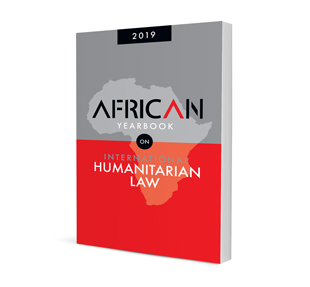
Revisiting the scope of application of Additional Protocol II: Exploring the inherent minimum threshold requirements
Authors: Martha M Bradley
ISSN: 2521-2621
Affiliations: LLB LLM LLD (University of Pretoria) LLM (University of Cape Town)
Source: African Yearbook on International Humanitarian Law, 2019, p. 81 – 122
Abstract
Currently, the landscape of armed conflict reflects a complex reality: Multiple non-international, as well as international armed conflicts, often co-exist in the same territory during the same time frame. Consequently, not all these conflicts are regulated under the same rules of international humanitarian law. In the period leading up to mid-2019, multiple armed conflicts of a mixed nature prevailed. On the African continent the conflicts in the Central African Republic, Mali, South Sudan and the Democratic Republic of the Congo are examples of such complexity which presents a challenge in conflict classification. In each of these conflicts, some of the armed groups display a degree of territorial control, with the result that these conflicts may trigger the application of Additional Protocol II. Additional Protocol II is the only treaty dedicated to the regulation of non-international armed conflict. It supplements and elaborates on the basic guarantees of humane treatment codified in Common Article 3, thus offering better protection to those involved in an Additional Protocol II-type non-international armed conflict. Article 1(1) of Additional Protocol II necessitates a high degree of organisation to be in place for an armed group to qualify as an organised armed group within the scope of application of this treaty. Not every ‘band’ acting under a ‘leader’ qualifies as an organised armed group under Additional Protocol II as only those armed groups that satisfy certain criteria are considered to be an armed group for the purposes of Additional Protocol II. Even though this instrument has celebrated 40 years of survival since its activation in 1978, its scope of application has received scant attention in scholarly work. This contribution sets out to clarify the minimum threshold requirements inherent in the organisational criteria that non-state fighting units have to meet under Article 1(1) of Additional Protocol II. It will achieve its aim by employing the rules of treaty interpretation as codified in Articles 31 and 32 of the Vienna Convention on the Law of Treaties.